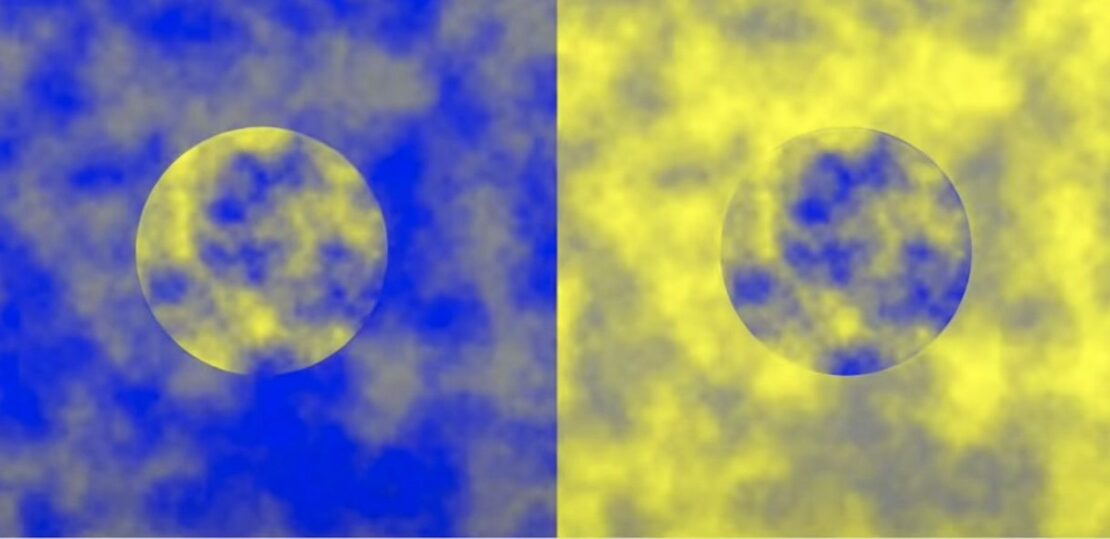In this comprehensive analysis of perception, linguistics, and the natural world, we dive deep into the intriguing question of whether two moons can indeed be exactly the same color.
Delving into the realms of color theory, cognitive processing, and language’s impact on our understanding of the world, this article will provide an in-depth exploration of the factors at play when we consider the seemingly simple question: Are these two moons exactly the same color?
Join us as we unravel the complexities of color perception, language, and the universe itself to determine the answer to this captivating query.
A World of Color: The Science Behind Moon Colors and Perception
Before we can delve into the question of whether two moons can be exactly the same color, we must first understand the scientific principles governing color and perception.
Color Theory: At the core of our understanding of color lies color theory, a field which seeks to explain the relationships between colors and how they are perceived by human beings. One of the key concepts in color theory is the idea that color is subjective – it is not an inherent property of an object, but rather a result of the way our brain processes information from our eyes. This means that our perception of color can be influenced by factors such as lighting conditions, the presence of other colors in our field of view, and our individual physiological makeup.
Moon Colors: The colors of celestial bodies, including moons, are influenced by a variety of factors. These can include the chemical composition of the moon’s surface, the angle of sunlight hitting the surface, and the presence of any atmosphere or clouds. For example, Earth’s Moon appears gray to our eyes due to its rocky surface, while Mars’ moons Phobos and Deimos have a reddish hue due to the presence of iron oxide. Additionally, the angle of sunlight can cause a phenomenon known as the opposition effect, where a bright spot appears on the moon’s surface when the sun is directly behind the observer. This can further impact our perception of a moon’s color.
Color Perception: Human color perception relies on specialized cells in our eyes called cone cells, which are sensitive to different wavelengths of light. The brain then processes this information to create our perception of color. However, individual differences in cone cell distribution and sensitivity can result in variations in color perception between people. Furthermore, external factors such as lighting conditions and surrounding colors can also influence our perception of an object’s color. This means that even if two moons were physically identical in color, our perception of their colors could still vary depending on a multitude of factors.
Language and Color: How Words Shape Our World
As specialists in the English language, we must also consider the role that language plays in shaping our perception of color and the world around us.
- Linguistic Relativity: The theory of linguistic relativity, also known as the Sapir-Whorf hypothesis, posits that the structure of a language influences the way its speakers perceive and think about the world. This means that our understanding and perception of color can be affected by the language we speak. For example, some languages have fewer color terms than others, potentially leading to a different perception of the color spectrum by speakers of those languages.
- Color Terms: In English, we have a multitude of color terms that allow us to describe various shades and hues with precision. However, the boundaries between these terms can sometimes be arbitrary and culturally influenced. This means that even if two moons were physically identical in color, different people might describe their colors using different terms, leading to a potential misconception that the moons are different colors.
- Color Metaphors: The English language is also rich in color metaphors, which can further shape our perception of color. For example, we often associate the color blue with sadness or tranquility, while red is linked to passion or anger. These associations can influence how we perceive the colors of objects, including moons, and may lead to variations in our interpretations of their colors.
Putting It All Together: The Factors Determining Moon Color Perception
With an understanding of both the scientific principles governing color and the role of language in shaping our perception, we can now examine how these factors come together to influence our judgment of whether two moons are exactly the same color.
- Physical Factors: As previously discussed, the actual color of a moon is determined by factors such as its chemical composition, the angle of sunlight, and the presence of an atmosphere or clouds.These factors can result in variations in color between two moons, even if they are made of similar materials.
- Perceptual Factors: Our perception of a moon’s color is influenced by the way our brain processes information from our eyes. Individual differences in cone cell distribution and sensitivity, as well as external factors such as lighting conditions and surrounding colors, can lead to variations in color perception. This means that even if two moons were physically identical in color, our perception of their colors could still vary.
- Linguistic Factors: The language we speak can shape our understanding and perception of color. Differences in color terms and cultural associations with colors can lead to variations in how we describe and interpret the colors of moons. This can result in a misconception that two moons are different colors, even if they are physically identical.
Case Studies: Exploring Real-World Moon Color Comparisons
To further illustrate the complexities of determining whether two moons are exactly the same color, let us examine some real-world examples of moon color comparisons.
Earth’s Moon and Mars’ Moons: At first glance, one might assume that Earth’s Moon and Mars’ moons Phobos and Deimos are different colors due to their distinct appearances in images. Earth’s Moon appears gray, while Phobos and Deimos have a reddish hue. However, as previously discussed, the colors of these moons are influenced by factors such as their chemical compositions and the angle of sunlight. A more in-depth analysis reveals that the color differences between these moons can be attributed to these factors, rather than an inherent difference in color.
Exoplanet Moons: As we continue to discover new exoplanets – planets outside our solar system – and their moons, we are faced with the challenge of comparing and categorizing these celestial bodies. In some cases, two exoplanet moons may appear to be the same color when observed through a telescope. However, due to the factors discussed earlier in this article, determining whether these moons are truly identical in color is a complex task that requires a thorough understanding of both the scientific principles governing color and the role of language in shaping our perception.
In conclusion, the question of whether two moons can be exactly the same color is far from a simple inquiry. Instead, it is a multifaceted question that requires a deep understanding of color theory, perception, and language. While it is possible for two moons to be physically identical in color, our perception of their colors might still vary due to individual differences in cone cell distribution and sensitivity, external factors such as lighting conditions and surrounding colors, and linguistic factors such as color terms and cultural associations. Furthermore, even if two moons are physically identical in color, variations in their chemical compositions, angles of sunlight, and atmospheric conditions can create the appearance of different colors. As such, determining whether two moons are exactly the same color is a complex and nuanced task that requires careful consideration of a multitude of factors.




